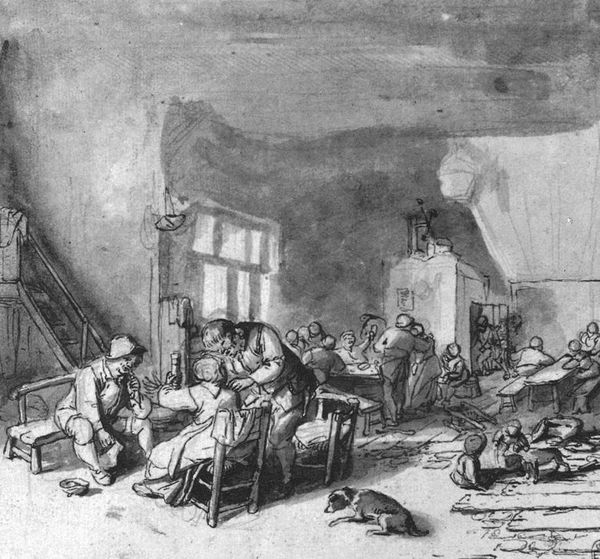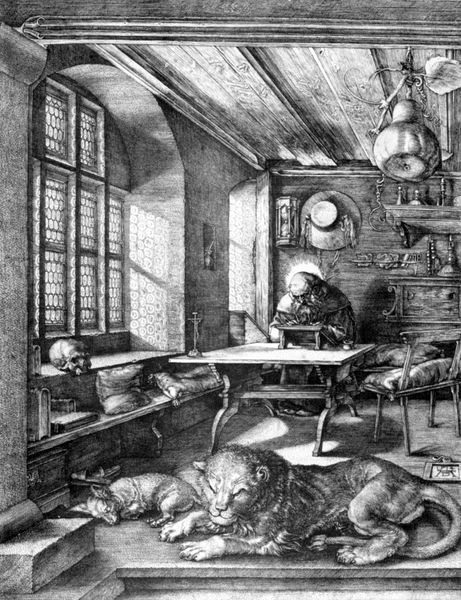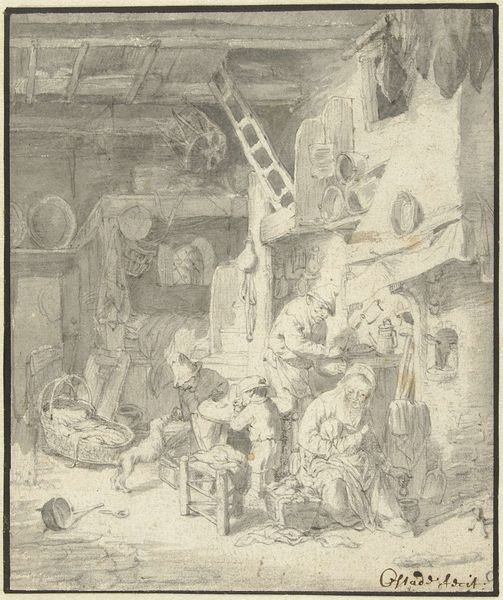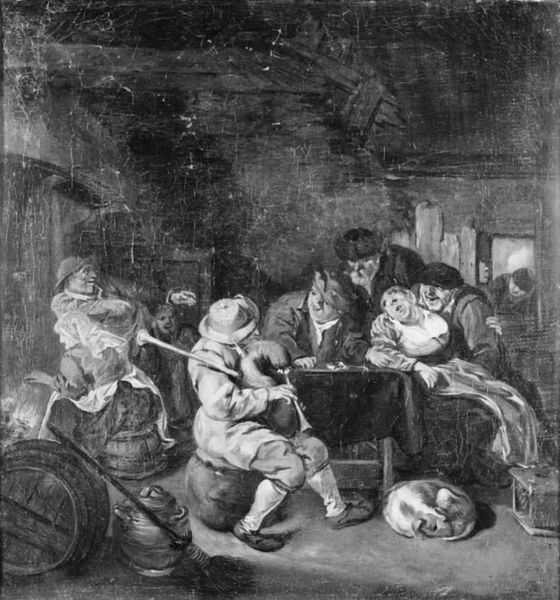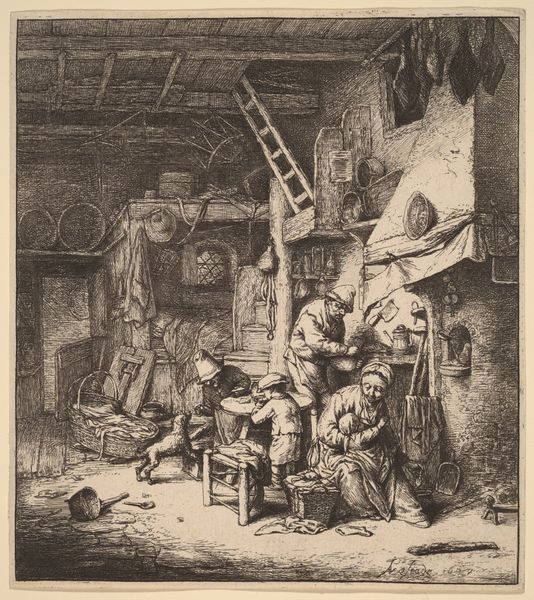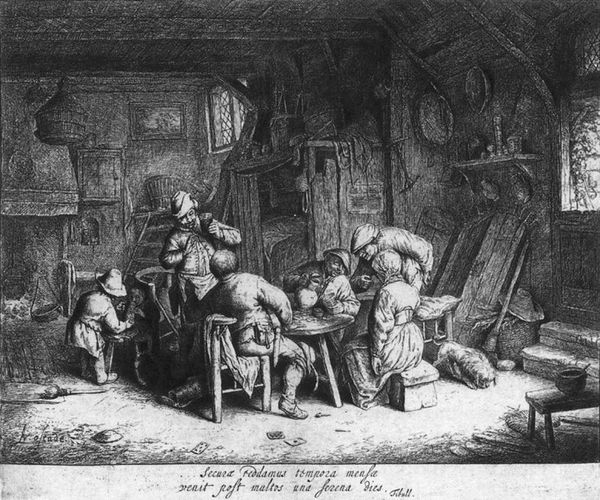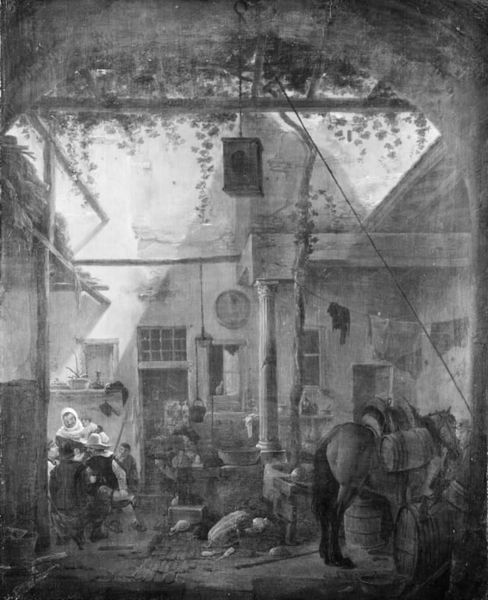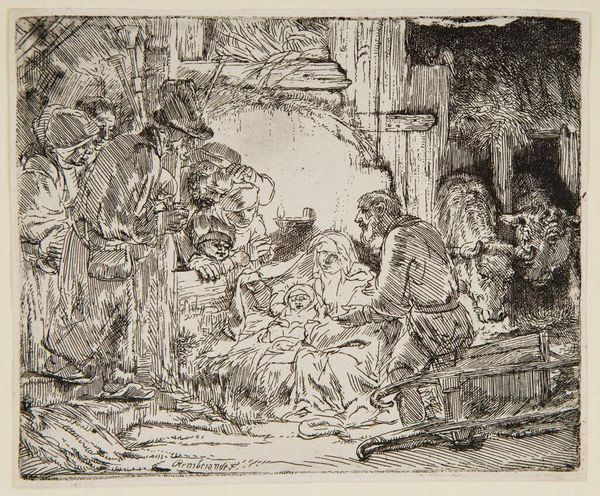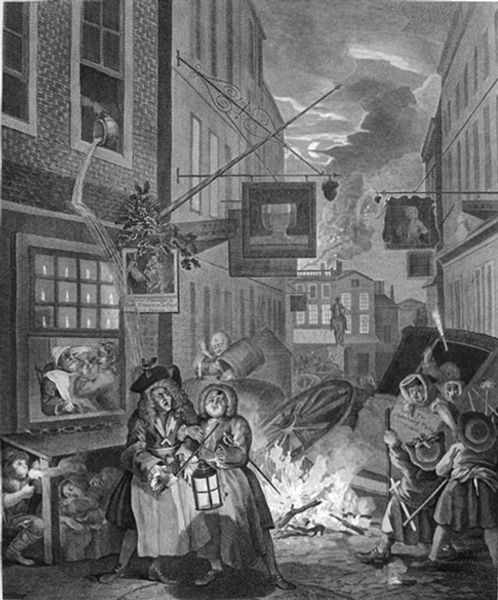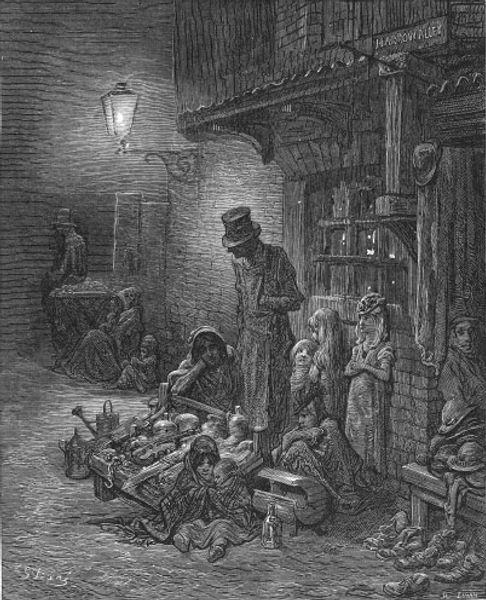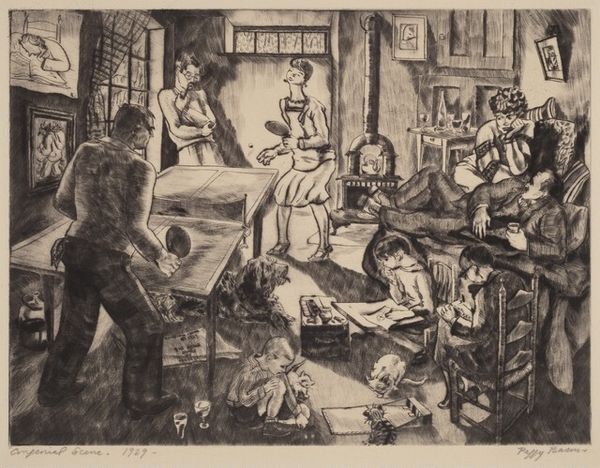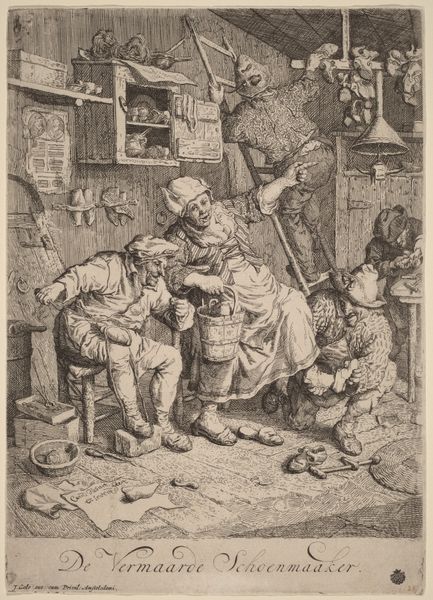
drawing, ink, pen
#
drawing
#
dutch-golden-age
#
pen illustration
#
ink
#
pen
#
genre-painting
#
realism
Dimensions: 17.4 x 15.4 cm
Copyright: Public domain
Editor: Here we have Adriaen van Ostade's "The Family", a pen and ink drawing from 1647. The scene is bustling with activity inside what appears to be a modest home. It strikes me as a pretty raw depiction of everyday life. What’s your take on this piece? Curator: Well, considering the socio-political context of the Dutch Golden Age, genre paintings like this gained immense popularity, reflecting a shift in patronage from the church and aristocracy to a rising middle class. Do you see how Ostade focuses on the mundane, a common family rather than heroic figures? Editor: Yes, it's like a snapshot, really unglamorous, yet intimate at the same time. It feels less staged than some other works from the era. Curator: Precisely. Ostade offers a glimpse into the lives of those often overlooked in art history. The clutter, the worn clothing – these details speak volumes about social strata. How do you think contemporary audiences would have interpreted this imagery? Editor: Perhaps with a sense of familiarity? Maybe even a sense of pride in representing their own lives accurately? Curator: Exactly. And also think about the rising art market at the time. Genre paintings allowed for wider accessibility. Images like this served a public function, reflecting back at people their own world. It’s interesting to consider how the portrayal of poverty or simpler living conditions became a commodity. Editor: It is quite thought-provoking. I initially saw just a drawing of a family, but understanding its historical role really gives it more depth. Curator: Absolutely. Examining art through the lens of social history unlocks so much about its public role and reception. Editor: I see that now. Thanks, I will definitely look at the impact of institutions on art more closely moving forward.
Comments
No comments
Be the first to comment and join the conversation on the ultimate creative platform.

